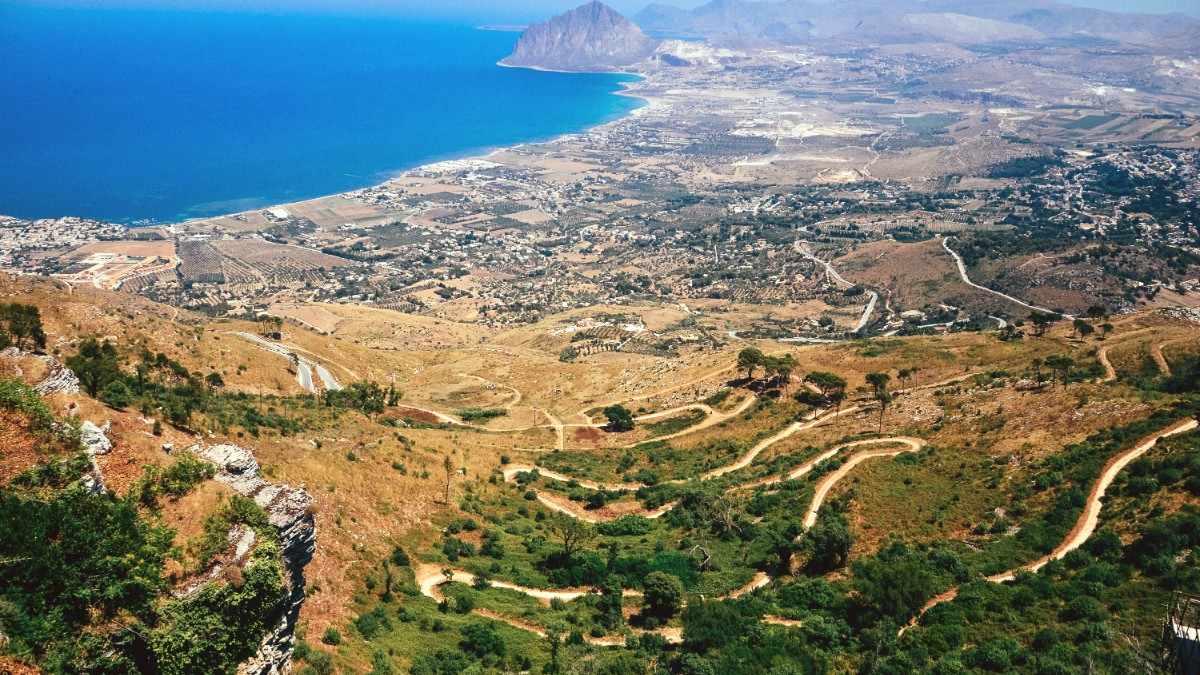
Sicily, Italy
Trapani sees service from a local airport, but a larger international airport nearby often presents more connection options.
Trapani-Birgi Airport (TPS) gives basic facilities: car rental desks, a few cafes, and a small duty-free shop. Free Wi-Fi is available.
Palermo Airport (PMO) presents more extensive facilities: a wider range of dining options, various shops, lounges, and multiple car rental agencies. Free Wi-Fi is also available.
Italy levies no specific exit fees or taxes upon departure from its airports for tourists. Any applicable airport taxes are included in your airfare. No additional payments are needed at the airport before your flight.
Trapani has a train station near the city center. Train services mainly connect Trapani with Palermo. The route to Palermo can be slow, sometimes with a change in Piraineto, or limited direct services. Journey: 2-3 hours. Tickets: Purchase at station, Trenitalia website, or travel agencies. Booking in advance for longer journeys.
Buses often render a more efficient and direct mode of transport than trains in Sicily for inter-city travel. Autoservizi Salemi connects Trapani with Palermo (city and airport), Marsala, Mazara del Vallo. AST serves local routes within Trapani province. Segesta Autolinee connects Trapani and Palermo. Tickets: Bus stations, online, or sometimes directly from driver.
Requirements: Valid national driving license. Non-EU citizens need an International Driving Permit (IDP) with national license. Minimum age 21 for rental (young driver surcharge under 25). Credit card in main driver's name for deposit. Rental Companies: Hertz, Europcar, Avis, Sixt, Budget, Enterprise at TPS and in city. Book in advance.
Trapani's role as a port means sea travel constitutes a mode of transport, especially for reaching the nearby islands. The Port of Trapani is a busy and important port with regular ferry and hydrofoil connections.
River transportation options are not applicable in Trapani. The city is coastal, and no significant rivers are used for transport in the area. Travel is mainly by sea, air, or land.
Road conditions in Sicily vary. Main roads and Autostrade (motorways) are generally in good condition. Smaller provincial roads, especially in rural or mountainous areas, can be winding, narrow, and less well-maintained.
Beyond standard options, Trapani presents unique ways to travel, notably for exploring its natural beauty and unique nearby attractions.
Trapani's historic center is largely pedestrianized or has very limited traffic, making it ideal for walking. Explore the narrow streets, the Lungomare (promenade), and the port area on foot. This lets you discover hidden alleys, admire the architecture, and soak in the local atmosphere.
Trapani has limited dedicated bicycle lanes. Sicilian drivers may not always expect cyclists. However, the flat terrain around the salt pans presents a pleasant and safe environment for cycling. When cycling on roads, remain vigilant and wear a helmet.
Several local tour operators feature guided walking tours of Trapani's historic center. These tours often focus on the city's rich history, Baroque architecture, and culinary traditions, giving insights you might miss on your own. Numerous online resources and guidebooks present self-guided walking routes.
Public transportation in Trapani relies on buses and an unique cable car system to a nearby hilltop town.
Purchase single bus tickets in advance from Tabaccherie (tobacco shops), newsstands, or some cafes. You might also purchase tickets directly from the driver, but this is often at a slightly higher price and tickets are not always available on board. Validate your ticket immediately upon boarding the bus using the machine near the door. Failing to validate leads to a fine. Day passes or multi-ride tickets may be available.
Bus stops are located around the Port area, along Via Fardella (the city's main commercial street), and near the train station. These hubs serve as central points for various routes. Route maps are generally available at the AST office, at major bus stops, or often online. Familiarize yourself with the main routes relevant to your accommodation and planned attractions.
The lower cable car station is located on Via Capua. This is a short bus ride or a walk from the Trapani city center, making it accessible for visitors. The upper station places you directly at the entrance of Erice's walled town.
Purchase bus tickets in advance from a Tabaccheria. Validate your ticket immediately upon boarding to avoid fines. Use Google Maps or Moovit for real-time bus routes and schedules. Be aware of Sunday and holiday schedule reductions. Consider walking the historic center of Trapani as it is compact and pedestrian-friendly. Always carry some cash for bus tickets or small purchases.